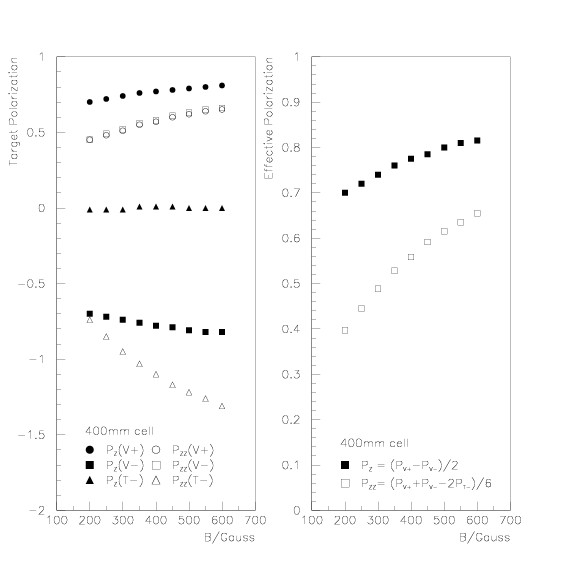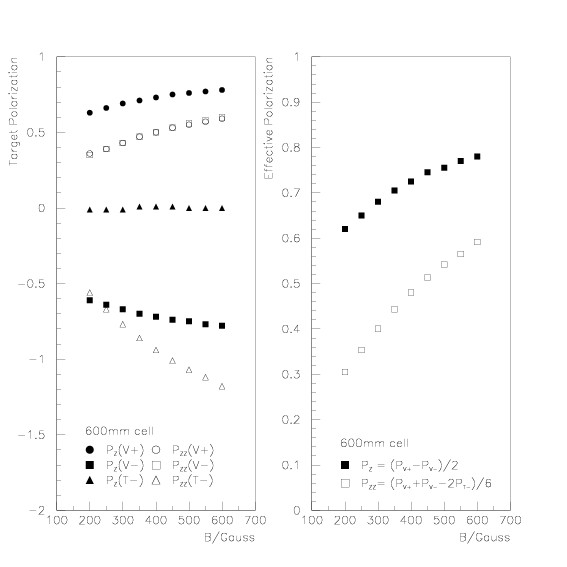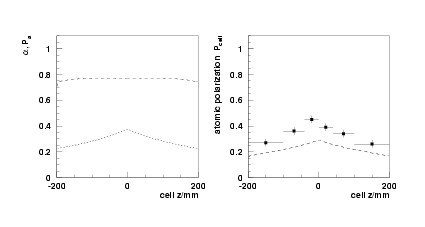Hello,
I have made calculations for the target polarization that
included all wall relaxation transitions (ten transitions
in total) and spin exchange. Only two parameters are needed
to describe the effect on the polarization.
The first attachment (field400.jpg) shows results for the
400mm cell. plotted are target polarizations vs. magnetic
field. The data is based on a comparison with measured data
at 350 Gauss target field (see abspol1.jpg).
The polarization loss is almost completely caused by spin
exchange collisions. Wall relaxation accounts only for a
depolarization of about 0.03 and is almost indistinguishable
from the unpolarized background. The efficiencies of the rf
transitions in the ABS are 0.95-0.98.
This also means that the hydrogen target is not affected much
by wall relaxation. Spin exchange does not contribute in this
case because we inject pure states. This means the the
polarization loss in the hydrogen target is mostly caused by
recombination of the atoms in the cell. I have attached a plot
that shows the individual contributions and a profile in
comparison to Genya's data: atomic fraction about 0.45,
polarization of atoms about 0.80 (hyd400.jpg).
A calculation for the deuterium target with a 600mm cell
assuming the same values for parameters of wall relaxation and
spin exchange is shown in the second attachment (field600.jpg).
The corresponding plot for the hydrogen target is shown in
the last attachment (hyd600.jpg). Here the increase in number
of wall collisions results in much lower atomic fraction but
still high polarization of the atoms.
Hauke





This archive was generated by hypermail 2.1.2 : Mon Feb 24 2014 - 14:07:31 EST